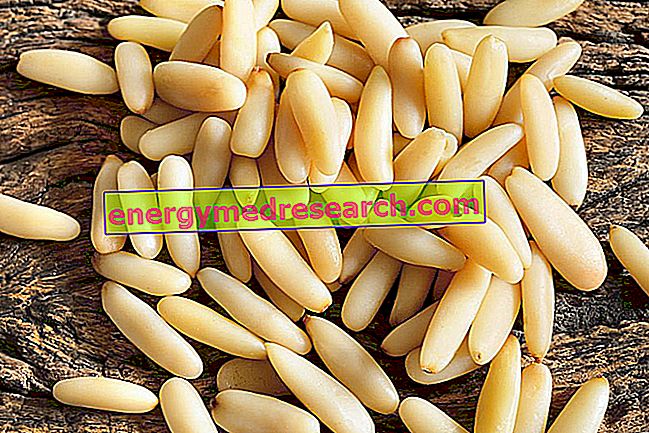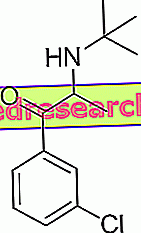
What is Cubicin?
Cubicin is a powder that is made up into a solution for injection or an infusion (drip into a vein) containing the active substance daptomycin.
What is Cubicin used for?
Cubicin is used to treat adults with the following bacterial infections:
- complicated infections of the skin and "soft tissues" under the skin. The term "complicated" indicates that the infection is difficult to treat because it has spread to the deep tissues under the skin, that it may be necessary to resort to surgical treatment or that the patient is subject to other conditions that could affect the response to treatment;
- infective endocarditis of the right heart (infection of the lining or valves of the right side of the heart) caused by the bacterium Staphylococcus aureus ( S. aureus ). The decision to treat this type of infection with Cubicin should be based on the hypothesis that the medicine is effective against infection and on the advice of an expert;
- bacteremia (blood infection) caused by S. aureus, associated with one of the two infections mentioned above.
The medicine should be prescribed paying attention to the official guidelines on the use of antibiotics.
The medicine can only be obtained with a prescription.
How is Cubicin used?
Cubicin should be given as an intravenous infusion (into a vein) lasting 30 minutes or as a two-minute injection by a doctor or nurse. For skin or soft tissue infections without bacteremia, the recommended dose is 4 mg per kilogram body weight once every 24 hours for seven to fourteen days or until the infection disappears. For endocarditis and for infections of the skin or soft tissues with bacteremia, the recommended dose is 6 mg / kg every 24 hours. The duration of treatment depends on the risk of complications and official recommendations.
Cubicin should only be used in patients with kidney problems if the benefit of the treatment is greater than the potential risk; in the latter case it can be given less frequently. Depending on the type of infection being treated and the number of infections present in the patient, it is possible to administer other antibiotics during treatment with Cubicin.
How does Cubicin work?
The active substance in Cubicin, daptomycin, is an antibiotic that belongs to the "lipopeptide" family. It can interrupt the growth of certain types of bacteria by binding to the membrane around each bacterial cell and altering the primary functions that allow the cell to survive. The summary of product characteristics (also included with EPAR) includes the list of bacteria against which Cubicin is active.
How has Cubicin been studied?
Cubicin infusions were studied in two important studies, involving 1, 122 adults with complicated skin and soft tissue infections (mainly wound infections and severe abscesses) and in a study involving 246 adults with bacteremia caused by S. aureus, including 35 also affected by infective right endocarditis. In all three studies, Cubicin has been compared to the standard treatments used for this kind of infections (other antibiotics such as vancomycin or one of the penicellins, including oxacillin, cloxacillin, flucloxacillin and nafcillin). These studies examined whether the infections were cured or improved.
Two additional studies were performed on a total of 40 healthy volunteers to show that Cubicin injections are as safe as the infusions, and that they produce similar levels of daptomycin in the blood.
What benefit has Cubicin shown during the studies?
Cubicin was as effective as standard therapies.
In studies of skin and soft tissue infections, success rates 7 to 12 days after the last Cubicin injection were 67% in one study and 85% in the other. The difference in the response rate between the two studies is due to differences in the type of patients and infections being treated.
For the treatment of bacteremia in patients with infectious right heart endocarditis, 42% of patients who received Cubicin (8 out of 19) and 44% of patients given standard care (7 out of 16) are been successfully treated. However, there was insufficient evidence to support the use of Cubicin in the treatment of bacteraemia in patients without infective right endocarditis or complicated skin and soft tissue infections.
What is the risk associated with Cubicin?
The most common side effects with Cubicin (seen in more than 1 patient in 10) are infections caused by fungus (mold and yeast), headache, nausea, vomiting, diarrhea, rash, reactions at the infusion site, test results out of the liver and increased blood levels of an enzyme called CPK (a marker of muscle injuries). For the full list of all side effects reported with Cubicin, see the Package Leaflet.
Cubicin should not be used in patients who may be hypersensitive (allergic) to daptomycin or to the other ingredient (sodium hydroxide). The medicine should be administered with caution to patients with kidney problems, to whom it can be given less frequently. In all patients, CPK levels should be measured at regular intervals, particularly in the presence of known risk factors for muscle injuries. For the full list of usage restrictions, see the package leaflet.
Why has Cubicin been approved?
The Committee for Medicinal Products for Human Use (CHMP) decided that Cubicin's benefits are greater than its risks for the treatment of adults with complicated skin and soft tissue infections, infective right endocarditis of the heart and bacteremia due to S. aureus associated with one of these infections. The Committee recommended that Cubicin be given marketing authorization.
What measures are being taken to ensure the safe use of Cubicin?
The company that makes Cubicin will perform further studies on Cubicin to see if it has effects on the muscles and to observe their safety and efficacy in patients with kidney problems and in elderly subjects.
More information on Cubicin:
On 19 January 2006, the European Commission issued a marketing authorization for Cubicin, valid throughout the European Union. The marketing authorization holder is Novartis Europharm Limited.
For the full EPAR of Cubicin, click here.
Last update of this summary: 03-2009.



